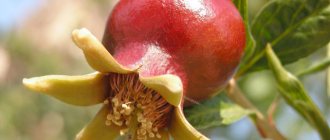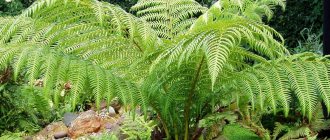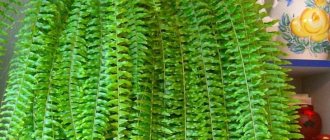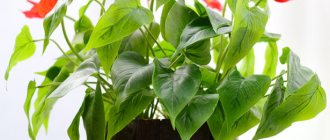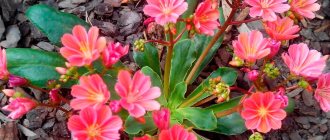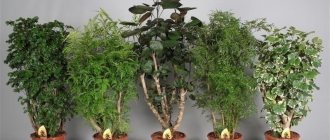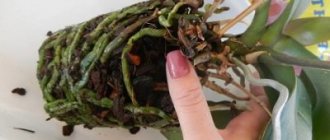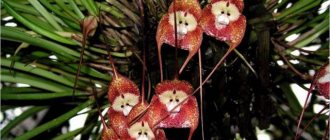Indoor fern - benefits and harm at home
House fern is perfect for keeping at home. It won't be difficult to grow it. Greenery with original, elongated leaves will add a little exoticism and warmth.
Fern in nature
There are several main varieties:
- Nephrolepis is the most popular species for growing in an apartment. The following varieties deserve attention: Pulmosac, Rooseveltia with lobed leaves, Can Can with corrugated leaves, Norwoodiiс with leaves in the form of feathers and frills, Whitmanii with thin and curly foliage.
- Adiantum is another graceful, compact plant. Its height is from 30 to 40 cm. It has a fine structure. The leaves are a rich green color and look like ginkgobiloba leaves. During the season it can grow 2 times. Features very fast regeneration. It has not become widespread as the first species due to its high sensitivity to changes in location and environmental conditions.
- Platycerium moosehorn is perhaps the most exotic of all indoor ferns. The leaves are up to 70 cm long and gray-green in color. Their external shape is similar to elk antlers. Under natural conditions, they are able to press against the branches, forming a vessel in which sedimentary water used for irrigation is collected. Old leaves are turned into humus and also end up in these containers. Their purpose is to feed the root system.
- Pellea rotundifolia came from New Zealand. In the plant’s homeland, the soil is enriched with various limestone rocks. The bright green leaves have a rounded shape. The shrub is low. Grows up to 30 cm.
- Asplenium nidus has shiny, lush green foliage that forms a funnel-shaped rosette. They differ based on the variety. They can be in the form of a wave, with teeth, wide or narrow, up to 1 m long.
Decorative value
The house fern is an ornamental plant. Depending on the variety, they get the desired effect, complementing the interior. In any case, the plant decorates the room, bringing exoticism and grace to it. It is also used in landscape design, creating single or combined compositions.
Plant in interior design
Benefits and harms for the inhabitants of the house
Many legends and superstitions have been created about this plant. But both the benefits and harm that fern can cause have already been scientifically proven.
Home benefits:
- absorption of toxins;
- air humidification due to intense movement of water in parts of the plant;
- absorption of radiation from household appliances, such as microwaves.
Possible harm is that placing the flower in the bedroom next to the bed can cause headaches, since the plant emits carbon dioxide at night. A reaction is also possible in allergy sufferers.
Is it possible to keep a fern at home? Of course you can. You just need to put it in the right place, taking into account the above information about the benefits and potential harm.
On a note! Nephrolepsis eliminates xylene and formaldehyde, thus purifying the airspace.
Poisonous properties of some species
It is worth talking about some poisonous varieties. Their properties are used in pharmacology for the preparation of medicines.
Substances containing Ostrich, Shield, and Bracken have a poisonous effect. You can even be poisoned by the milk of an animal that has eaten the leaves of a flower.
Variety Orlyak
Transfer rules
Many gardeners ask the question of how to replant a fern, although in fact it is simple to do.
The main thing is to follow a number of rules:
- replant 1-2 times a year in the spring, but only when the root system has grown and completely occupied the volume of the entire pot
- when transplanted in the fall, the plant may often get sick
- if the roots have not grown completely, only replacing the top layer of soil will be sufficient.
It is advisable to choose a pot based on the following principles:
- The width of the planting container must be equal to the height
- The bottom is wide enough, not narrow
- smooth, not thick walls
- porous, breathable material
- size - 2-3 cm in diameter wider than the previous one
Based on the basic requirements, fired clay pots are considered the most suitable. Nephrolepis is replanted only by transshipment, without clearing the roots of the old soil, so as not to injure them.
The bush is taken out of the pot, transferred to a new one and fresh soil mixture is added, leaving the base of the stem above the surface.
Nephrolepis should be planted no deeper than in the previous pot.
Article on the topic: Greenhouse varieties of cucumbers: description and photo, the most productive, bunch and bush varieties
Is it possible to keep a fern in an apartment?
Now a little about the esoteric background of keeping ferns at home. There is an opinion that you cannot grow a plant in an apartment, others say the opposite. It is credited with both positive and negative influence on the living person. For example, they say that the plant helps create harmony and mutual understanding in the family and helps to spend less money. Particularly suspicious people do not keep this flower in the house because of the possibility of attracting illness and misfortune.
Garden fern - planting and care
Florists do not take into account any superstitions and successfully use plants to create luxurious compositions.
Interesting . There is a legend about a wild fern that is difficult to find and see in bloom. Whoever finds it will have instant luck.
One of the rarest ferns - polypodium
Polypodiums, or Centipedes, are ancient ferns from the family of the same name, Centipedes (Polypodiaceae). Their name, like their appearance, has not changed for thousands of years. Polypodiums are often confused with Phlebodiums, and changing the classification with the transfer of individual species from one genus to another does not simplify the situation.
But Polypodiums remain the rarer, less extravagant and very special character rare ferns that deserve special status and treatment.
In Europe, centipede ferns are often called sweetroot. But still, translated analogues of the botanical name are much more popular. In nature, centipedes prefer to settle in the Southern Hemisphere. Some species are found in Australia and New Zealand, in southern India, and in South America. This forest plant most often chooses dense forests and jungles with high humidity and fairly secluded lighting; it grows on bushes and trees.
The structure of this fern is often compared to water lilies, emphasizing how atypical a member of the fern class Polypodium actually is. But it is more appropriate to call it an original culture, rather than looking for analogies with aquatic plants.
Polypodiums are characterized by special rhizomes - creeping, scaly, horizontal rhizomes with fairly thick adventitious roots. The rhizomes of polypodiums differ in size and rhizome character. Some polypodiums have thin roots, others have thicker and fleshier roots, but they are easily recognizable by their horizontal arrangement and characteristic scales on the surface. Polypodiums do not form a stem; leaf petioles remain very important organs for them.
All polypodiums grow quite quickly, actively growing in indoor conditions and producing several new leaves annually. They develop in a horizontal plane, gradually spreading, which should be taken into account when choosing a location and when searching for a container or method of cultivation. This is one of the fastest growing types of ferns for growing in rooms and greenhouses, capable of achieving maximum decorative value by the third year of cultivation.
From the upper part of the rhizomes, in rows, on fairly long, segmented petioles, large fronds of leaves develop. The maximum height of polypodium leaves is about 100 cm, although most species are limited to much more modest sizes up to 50 cm in height, and indoor plants are most often compact epiphytes up to 40 cm in height.
Pinnately divided or pinnately dissected, they are distinguished by their dense texture, asymmetrical shape of the lobes and, most often, free veins. The segments are lanceolate or almost tongue-shaped, irregularly wavy, most often with a solid edge and a rounded tip. The leaves of polypodiums unfold very beautifully, from a peculiar shell-like shape they stretch into a tight spiral and then straighten out their lobes.
In some polypodiums the leaves are green, quite dark or brighter, in others they are covered with a bluish coating or uneven, barely visible spots, with thinner or wider, curved or almost straight lobes. The variety of colors in greenhouse and indoor culture is particularly striking.
Sori of polypodiums are formed quite actively and over almost the entire reverse surface of the leaves. They are located closer to the edge of the leaf plate, between the veins, large and round, not covered by a spathe.
Centipede fern, or Polypodium polypodioides. Ransomed63
How to plant a fern in a pot
Most representatives of this culture live in forests, which is why they love moist soil enriched with humus. The right solution is to plant a flower at home in a special soil, for example, for palms and ferns, bought in a store. When preparing it yourself, be sure to add compost from the leaves. This increases the humus content. Good soil should absorb moisture and allow it to pass through so that stagnation does not form.
Indoor fern - species for growing at home
The fern houseplant prefers medium to high acidity levels. To protect against pests, peat, sand (exceptionally coarse), leaf compost, and turf are added to the soil. Place in a preheated oven for 1 to 1.5 hours.
Attention! The paleness of the sprouts is a signal to transplant into a new container.
Fern transplantation
The root system grows quickly, so you will have to change the pot often - once a year with normal, healthy flower development. Stems and leaves grow as quickly as the roots. For this reason, the soil becomes depleted.
The best ceramic pot. It both absorbs and releases moisture. The container should be heavy, even weighty, since with age the fern’s weight becomes greater and it grows asymmetrically.
Fern planting
The transplant takes place in several stages:
- The plant, without removing it from the pot, is placed in a larger container. Fill it with water. Leave for 20 minutes, after which the plant is turned over with the tips of the leaves down and carefully removed from the planting pot (along with the soil).
- Place drainage (made of brick crumbs or small pebbles) at the bottom of the new container. Soil is poured up to the middle. Place the fern in a pot and gently cover it with soil. The root neck is not touched and left above the soil surface.
- Carry out abundant watering.
- Shed again after two weeks, even if the top layer has not dried.
After the plant has completely established itself in a new place, you need to care for it in the usual way.
Attention! A fern with fresh and lush green leaves has healthy roots.
Dried or rotten leaves are cut off. The sections are treated with a solution of potassium permanganate and then sprinkled with charcoal, ground into powder.
Feeding ferns. Fertilizers for ferns
During the growth and development of ferns, nutrients are absorbed from the soil. Therefore, ferns should be periodically fed with organic and mineral fertilizers. The soil in pots contains a limited supply of nutrients, which are constantly extracted from it by the roots of the plant and leave with water through the drainage holes. When the supply of nutrients is depleted, the fern plant must be fed during the period of active growth. Feeding is carried out exclusively during the growth stage ; it is undesirable at rest. Ferns require certain amounts of nitrogen, phosphorus and potassium and small amounts of trace elements. Only then can they grow healthy.
It is not recommended to feed sick plants and plants after transplanting or transshipment. When transplanting, the root hairs with which plants absorb minerals are damaged, so feeding in this case can only lead to burns of the roots and, as a result, the death of the plant.
How to care for house fern
Indoor abutilone - home care
The reputation about the capriciousness of the fern plant (care accompanied by various difficulties) is a fiction. In fact, caring for a fern is simple and brings a lot of pleasure, because the miracle plant responds to proper watering, fertilizing and grows prettier right before our eyes.
Most forest species love shade and warmth. A suitable place for their location in the apartment is the western or eastern side. A spacious, well-lit kitchen will do. On the south window you need to create artificial shading, especially in spring and summer at lunchtime.
Features of caring for forest ferns in an apartment
An important part of fern care is regular spraying of the leaves and frequent watering. The plant is sensitive to drying out of the substrate, but at the same time it does not like waterlogged soil.
During growth, water once every 2 days using settled water at room temperature. The water must be soft. Tap water is a bit harsh in this regard. It usually contains a large amount of calcium carbonate. Settled rainwater works great.
Fern prefers well-moistened soil
Fertilize the plant from the beginning of spring until the beginning of autumn. One application of fertilizing per month is enough. It is better to purchase store-bought fertilizers intended for ferns, rather than universal ones.
Attention: Winter is a period of rest and rest for the plant. At this time, watering is reduced to once every 7 days. No fertilizer is applied at all.
Comfortable temperature during the growing season is from +18 to +21 degrees. In winter it’s a little lower – up to +15, +18. Ferns in home care require high humidity - more than 60%. Therefore, it is not placed next to heating devices. Otherwise, the foliage will begin to dry out.
Fern simply loves the spraying procedure. It is carried out systematically. It is good to place a container of water nearby, such as a vase or jug. This will serve as an additional source of air humidification.
Note: Platycerrium elkhorn does not like rubbing leaves. They are covered with hairs that cope perfectly with the problem of dry air. Just spraying is enough.
Spraying from a spray bottle
Garden fern diseases. Useful to know about ferns
Ferns amaze with their diversity. The care for it will depend on what kind of plant you want to place in your apartment.
The appearance and life forms of ferns are very diverse. Among them there are aquatic plants, for example, Salvinia floating - a small fern with rounded fronds. There are also quite drought-resistant, growing on rocks, epiphytic, tree-like, creeping, climbing. The leaves of ferns (fronds) can be either simple, double or triple dissected, pinnate, ranging in size from very tiny to several meters.
Methods of propagation of ferns
Most ferns reproduce primarily by spores. Some species are “viviparous,” for example, Ceratopteris or Asplenium viviparous. These ferns form numerous offspring directly on the fronds. Nephrolepis - the most common ferns in indoor floriculture - form new plants at the ends of long tendrils extending from their vertical rhizome. Many ferns can be propagated by dividing the rhizomes, for example, Adiantum.
Basic rules of care
All ferns cannot tolerate wintering in a warm, dry place, but in a humid greenhouse they can easily do without coolness. When growing openly in a room, on a windowsill, you need to isolate the plants from the drying air coming from the battery.
For planting most common species, standard flower pots and cache-pots are quite suitable, and for species with creeping rhizomes, such as polypodiums and dali, planting in wide and shallow containers is advisable. Platycerium is best planted in pots with holes or baskets, while species such as pyrrosia prefer to be planted on blocks.
The main requirement for soil is not even its composition, but its physical properties. It should be light, loose, water- and breathable, this is especially important for epiphytic ferns. For most species, any purchased mixtures based on peat humus with the addition of washed sand are quite suitable. Epiphytic species can be planted in a mixture of bark, sphagnum and cut dry leaves, add pieces of peat and coal.
Almost all ferns prefer uniform, moderate watering. They do not like either dryness or constant dampness. For irrigation, it is better to use soft, settled water (hard water must first be boiled and left for about a day) or rain, osmosis, etc. A number of species, such as maidenhair, are more often found in nature on calcareous soils, so they will grow well even when watered with regular tap water. Most ferns are very useful to spray regularly, because... the air in the rooms is usually quite dry, but polypodium aureum, for example, is not recommended to be sprayed, as this often leaves unsightly brown spots on its leaves.
Diseases and pests of ferns
Ferns are resistant to diseases and are rarely affected by pests, with the exception, perhaps, of scale insects - a real scourge of ferns. Scale insects are very resistant to chemical agents, which cannot be said about many ferns, especially since the use of these agents on ferns is quite difficult. In species with large fronds, such as platicerium or polypodium, pests can also be removed mechanically - simply remove them with cotton wool soaked in alcohol (not vodka!), and in species with small numerous segments, such as adiantum or nephrolepis, it is easier to completely remove all fronds and regrow them. This pest settles on the petioles and even on the rhizome of the plant, which makes combating it very difficult, so mandatory quarantine is required for all new plants purchased.
Diseases are usually associated with improper care and, most often, with watering. If a fern, for no apparent reason, begins to shed frond segments, turn yellow and wither, then most likely you simply overwatered it, or the soil is too compacted and sour. Overwatering is much more dangerous for ferns than overdrying. In this case, an urgent transplant is needed. Another reason for the poor health of plants can be a draft; most ferns cannot stand it, with the exception of Cytomium.
Reproduction
Propagating ferns by sowing spores is a difficult task. Even experienced flower growers do not resort to it. Of course, it is interesting and informative to observe how plants develop from the very beginning, in other words, to grow from the “embryo”. When choosing this method, you should know that at some stages of the growth of young plants you need to take into account all the features of how to care for them.
There is another, simpler method - propagation by rhizomes, in particular by dividing the bush. This is suitable for all plants with a developed and branching root system. The rhizome is divided into the required number of parts, on which there are heads - points for attaching leaves. There should be at least a couple of shoots on the division. Place in prepared containers.
The third way is using shoots. Choose arrow-shaped ones. They are bent to the ground surface and secured. After some time, the shoot takes root. At this stage, they are separated from the mother plant.
Reproduction by shoots
The fourth method is using lateral buds, which are separated when roots are formed on them. Young, newly emerged shoots are transferred to greenhouse conditions with high humidity and a temperature of at least +23 degrees. Such conditions can also be created in plastic containers. When the first leaves form, they are planted in pots.
Note : The latter method of propagation is especially suitable for Adiantum, Pteris and Pellaea.
How and when to divide a bush
One of the most effective and shortest vegetative methods of propagation of club mosses is the division of an adult bush. Before carrying out this procedure, it is necessary to water the bush generously with water at room temperature in order to easily pull it out of the ground without damaging the root system.
What is the structure of a fern - features of the leaves and roots of ferns
How to propagate indoor fern by dividing the bush:
- Dig holes 40-60 centimeters deep in advance. Their bottom is covered with drainage material, and the top is sprinkled with soil mixture.
- Pull the plant out of the old soil and divide it into several equal parts.
- Each of them is planted in a separate hole or pot.
Thorough root watering is carried out once a week and watered from above twice using a watering can.
Important! You cannot divide a young bush with one root rosette.
Spores on the underside of leaves
What to do if fern leaves dry out
Indoor fern requires proper care at home. Therefore, it usually gets sick due to non-compliance with the basic rules for growing. Particular attention should be paid when the leaves begin to turn yellow (primarily the tips), and the entire surface fades and loses its decorative effect.
Dried leaves
There are several reasons for this problem. This includes excessive watering, which leads to rot on the root system, and insufficient air humidity. Drying of foliage can occur due to pest damage. Although they are not very common in the history of ferns. This is the exception rather than the norm. Insufficient watering is another reason for leaf drying out.
If the fern is exposed to low temperatures for a long time, fungal damage may occur. This is signaled by the resulting brown or gray oval or round spots. These spots can be in the form of a border framing the leaf.
Among insect pests, scale insects are the most widespread. They are located on the reverse side of the leaf and drink plant sap. After this, yellow spots form on the leaves. When the entire leaf turns yellow, it dies.
Yellowing due to scale insects
Growing and care
Soil selection and preparation
The soil must have good moisture and air permeability. Here you must remember that under no circumstances should you allow the soil to become waterlogged. This means that water should not stagnate in the soil. Therefore, opt for loose soil, and a drainage layer of expanded clay is usually laid at the bottom. An increased level of acidity (from 5 to 6) is also welcome.
Avoid oversaturation of the soil with pine needles or peat
The most important thing you need to know about caring for fern soil is that it should not be too wet. If the leaves of your fern have brown or brown spots, know that waterlogging has just happened
If the spots are yellow, the soil is too dry; this should not be allowed either.
Watering and spraying
However, it will be difficult for a novice fern owner to determine what moderate watering is.
Pay attention to the soil. If its top layer has dried out, you know it’s time to water.
Do not overwater the plant, otherwise it will quickly rot and die.
Spraying is a necessary procedure for growing healthy ferns. This especially needs to be done in winter, because at this time of year the air in apartments is especially dry. And the best environment for any type of fern is moist! This procedure also includes feeding the planting with liquid fertilizers.
Don't forget to maintain the correct temperature. It's easy to do. Please note: the best habitat for ferns in summer is a street or forest. This means that a temperature of +20 degrees or more is absolutely optimal for it. but in winter you shouldn’t overcool it; the lowest threshold that a fern can withstand is +12 degrees. If in summer it is not difficult to maintain such a temperature, then in winter you need to try not to freeze the planting.
Lighting
Pay attention to how it grows in the forest. Under the trees, in the shade
This means that nothing bad will happen if the sunny side is occupied by other plants that are more demanding of light. However, if you place nephrolepis in an area with diffused light, it will grow most beautifully and show all its advantages. The most important rule is not to leave the plant in direct sunlight and do not place it in dark corners.
Kinds
Regardless of the species, ferns are quite lush bushes with long curved leaves. The vast majority of varieties have leaf blades that are lacy, pinnate and dissected, but there are species whose leaves are entire. There are few main types of decorative indoor ferns. Not all relics are capable of being in a limited space. The following varieties are chosen as indoor plants:
- Adiantum - thin, fairly strong shoots with pinnately dissected fronds. Grows well in shaded, warm and humid places. More suitable for growing in greenhouses and winter gardens, rather than in an apartment. Popular varieties are gentle, for the sake of Venus hair.
- Nephrolepis - leaf blades are lanceolate, strongly dissected and pinnate. The rhizomes of this relic can form new shoots. Most often, Nephrolepis sublime variety is kept in apartment conditions.
- Asplenium - grows well in shade, in conditions of high humidity. In apartment conditions they keep such varieties as nesting and viviparous, which have no noticeable similarity to each other.
- Blekhnum (another name for Derbyanka) is a spreading relict plant, the crown of which reaches 1 m in diameter, and the fronds are similar in appearance to palm leaves. At home, they often contain the Brazilian and humpback varieties.
- Platycerium (flathorn) is a relic of an unusual appearance for a classic fern - its fronds are large, shaped like deer antlers. The plant is relatively unpretentious in care.
- Pilea - unlike other species, this fern prefers dry rather than wet habitats. In indoor floriculture, varieties with the names green and round-leaved are popular.
- Disconia - the bush of this fern is not compact; adult relics can reach a diameter of 3 m, so this variety is grown only in spacious rooms.
- Polypodium (centipede) - strongly dissected fronds, with blunt tips, and rhizomes distributed over the surface of the soil. This plant can grow in rooms with dry air.
- Davallia - this relict has a thick rhizome and therefore it is also called “squirrel feet”.
Large plants look quite impressive in hanging pots, as well as on stands. However, each of the varieties is very different from each other in size, shape and color saturation of the leaf blades. There are other varieties of house ferns, the names and photos of which you can look at and choose the one you like best for growing.
Help! Fern leaves are sometimes used in floristry - to decorate bouquets and as part of flower arrangements. The plant restores torn leaf blades quite quickly.


